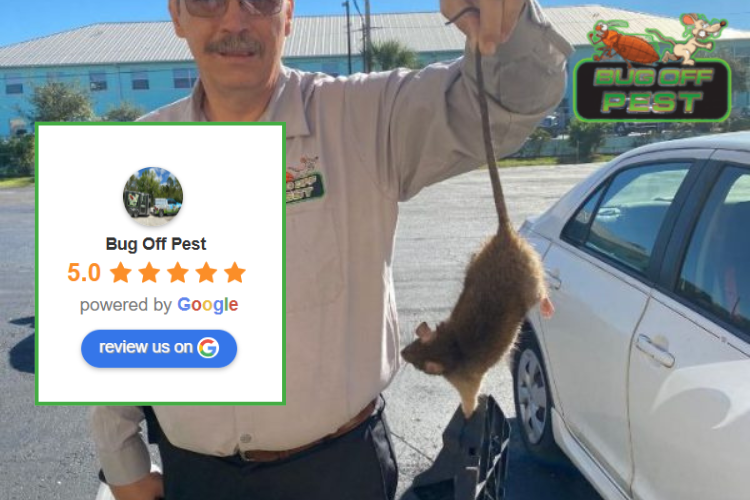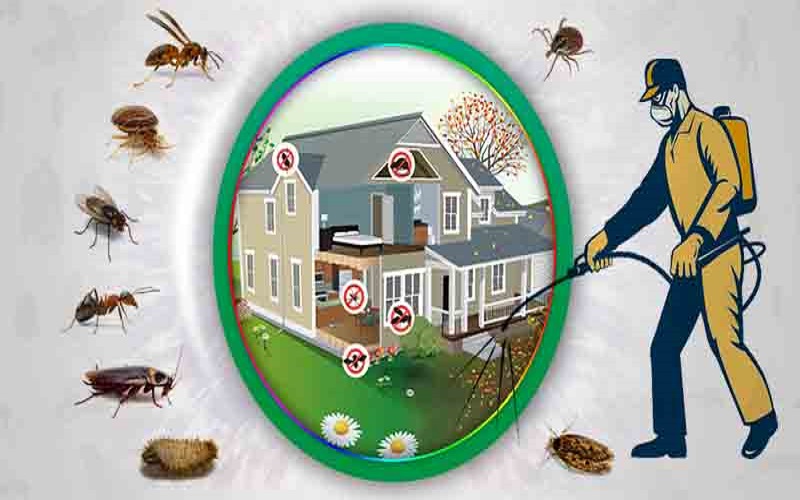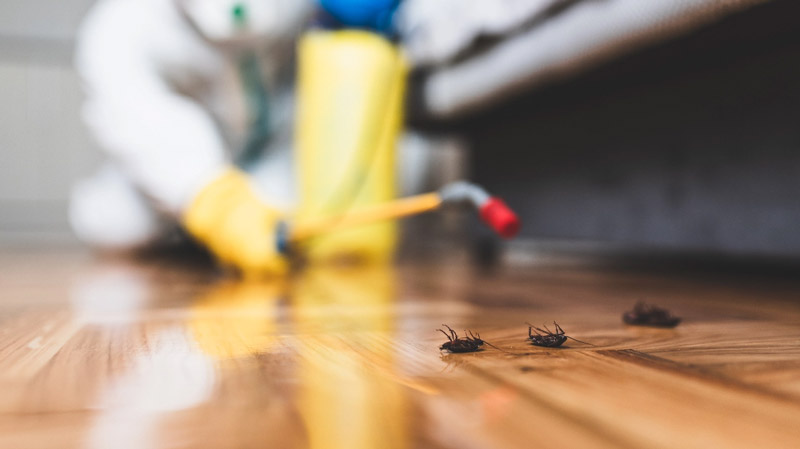Expert Bed Bug Exterminator Port Charlotte for a Peaceful Night’s Sleep Quality
Learn More About the most recent Advances in Bug Control and Just How to Implement Effective Treatment Solutions
In recent years, the field of parasite control has witnessed considerable developments, driven by the demand for efficient and lasting treatment solutions. Ingenious approaches such as Integrated Parasite Management (IPM) incorporate environment-friendly practices with innovative technology, improving both efficiency and environmental duty.
Eco-Friendly Insect Control Options
Over the last few years, the need for eco-friendly pest control choices has surged as house owners and organizations alike seek sustainable options to standard chemical therapies. This change is driven by expanding ecological recognition and a need to decrease the wellness threats connected with artificial chemicals.

Eco-friendly parasite control approaches include a variety of approaches that focus on making use of natural materials and methods. Integrated Pest Monitoring (IPM) is one such technique, combining organic, social, and mechanical strategies to handle bug populations while minimizing reliance on chemicals (Wildlife removal services). This holistic approach emphasizes avoidance with environment control and the intro of natural killers, thus cultivating a balanced ecosystem
One more popular choice is the use of organic chemicals originated from plants, which tend to be less harmful to non-target organisms. Products like neem oil and diatomaceous earth have obtained traction for their efficiency in controlling insects while posturing minimal dangers to human wellness and the atmosphere.
Furthermore, exemption techniques, such as securing access points and maintaining tidiness, play an essential function in eco-friendly insect administration. By taking on these sustainable practices, businesses and individuals can efficiently handle parasites while advertising a healthier planet for future generations.
Smart Innovation in Bug Monitoring
Innovation is reshaping the landscape of insect administration, with wise modern technology becoming a pivotal force in enhancing efficiency and efficiency - Wildlife removal services. The combination of Web of Things (IoT) gadgets, expert system (AI), and data analytics is reinventing exactly how bug control experts approach infestations
Smart traps geared up with sensors can spot pest activity in real-time, sending out prompt signals to drivers. This permits prompt reactions, lessening damages and decreasing the need for substantial therapies. In addition, AI formulas examine historical data to forecast bug habits, allowing proactive treatments based upon environmental problems and problem patterns.
Drones and automatic cars are also playing a substantial function in pest administration, offering aerial analyses of big locations, recognizing hotspots, and even dispersing targeted therapies. These technologies not just improve operations yet also boost security by limiting human direct exposure to potentially harmful chemicals.
In addition, mobile applications equip customers to keep an eye on pest task and access specialist guidance, cultivating a collective approach to pest administration. Overall, the fostering of smart innovation is establishing a new criterion in pest control, stressing data-driven decisions and sustainable techniques that eventually profit both professionals and homeowners alike.
Integrated Insect Monitoring Techniques
Integrated Parasite Management (IPM) utilizes an all natural approach to pest control, integrating numerous strategies to efficiently take care of parasite populations while reducing threats to human wellness and the environment. IPM revolves around comprehending the pest life process, their all-natural enemies, and the environment in which they grow.
Among the fundamental components of IPM is monitoring pest populaces via normal evaluations and data collection. This enables for the recognition of bug limits, establishing when treatment is necessary. Cultural practices, such as crop environment, rotation, and cleanliness manipulation, are essential in reducing pest prevalence and advertising plant wellness.
Mechanical controls, consisting of barriers and traps, are also vital in IPM. These approaches can literally eliminate or prevent insects without making use of chemicals. When required, the judicious application of chemical controls is employed, concentrating on targeted therapies that reduce environmental influence.
Education and learning and partnership among stakeholders, consisting of farmers, bug control experts, and the neighborhood, are essential for the effective execution of IPM methods. By prioritizing lasting methods, IPM not only addresses pest concerns however also cultivates a much healthier community.
Biological Control Methods
Countless biological control methods are significantly acknowledged for their effectiveness in taking care of insect populations while advertising ecological equilibrium. These techniques harness natural killers, parasites, and virus to decrease pest numbers without counting on artificial chemicals. For example, the intro of ladybugs can efficiently regulate aphid populations, while nematodes target soil-dwelling pest larvae.
Furthermore, the usage of microbial pesticides, such as Bacillus thuringiensis (Bt), gives an environmentally pleasant alternative for handling caterpillar pests. These products especially target pest species, lessening injury to helpful insects and pollinators. Moreover, preservation biological control highlights improving environments for natural adversaries, such as birds and advantageous bugs, therefore urging their presence in agricultural systems.
Research continues to reveal innovative techniques within this area, such as making use of scents to disrupt pest mating patterns or the development of biocontrol agents with genetic engineering. Carrying out these approaches can lead to sustainable pest management methods that reduce the reliance on chemical interventions, eventually promoting healthier environments. As recognition of these methods expands, they are ending up being important elements of integrated insect administration (IPM) techniques, providing a balance between effective parasite control and ecological stewardship.
Do It Yourself Bug Control Solutions
As house owners seek efficient ways to tackle parasite problems, DIY insect control solutions have actually obtained appeal for their availability and cost-effectiveness. These techniques empower individuals to resolve invasions utilizing conveniently available products and strategies, commonly without the requirement for professional treatment.

Additionally, keeping correct cleanliness and regular inspections can prevent parasite entrance and nesting (Wildlife removal services). Easy practices, such as securing splits, eliminating food sources, and decluttering, can significantly diminish bug populations. Traps, both homemade and readily offered, can also supply efficient services for monitoring and regulating particular pests like pests or rodents

Final Thought
The combination of eco-friendly pest control alternatives, wise technology, and innovative monitoring methods presents a comprehensive strategy to efficient pest monitoring. By welcoming Integrated Bug Management (IPM) and making use of subterranean termite treatment organic control techniques, alongside do it yourself options, sustainable and liable bug control can be achieved. These innovations not just enhance the performance of insect monitoring methods but likewise add to a much healthier environment. Carrying out these strategies cultivates a balanced environment while successfully resolving pest populations.
Environment-friendly parasite control methods include a variety of methods that focus on the usage of natural substances and practices. Integrated Insect Administration (IPM) is one such strategy, incorporating biological, cultural, and mechanical strategies to manage insect populations while minimizing dependence on chemicals. As read what he said recognition of these strategies expands, they are coming to be indispensable components of integrated pest management (IPM) techniques, providing a balance in between efficient parasite control and ecological stewardship.
The assimilation of green parasite control options, smart technology, and innovative management strategies presents a comprehensive approach to reliable parasite administration. By accepting Integrated Insect Management (IPM) and making use of organic control techniques, together with DIY services, liable and lasting pest control can be achieved.